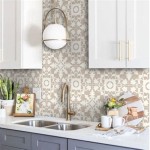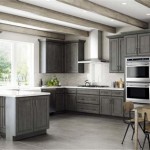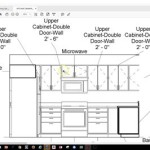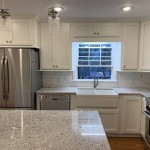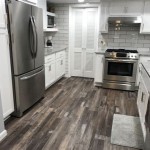Molding Trim for Kitchen Cabinets: Essential Aspects
Molding trim, a noun that defines decorative or functional strips of wood or other materials, plays a crucial role in enhancing the aesthetics and functionality of kitchen cabinets. To achieve a seamless and visually appealing outcome, several essential aspects require careful consideration. This article explores these key factors, providing guidance on how to effectively integrate molding trim into your kitchen cabinetry. ### Types of Molding Trim The selection of molding trim is influenced by the desired style and functionality. Common types include: -Cove Molding:
Creates a smooth, rounded transition between surfaces. -Crown Molding:
Adds a traditional and elegant touch to the top of cabinets. -Base Molding:
Conceals gaps between cabinets and the floor, providing a polished appearance. -Light Rail Molding:
Installs under upper cabinets to create a decorative accent and indirect lighting. ### Materials for Molding Trim The choice of material affects the durability, cost, and aesthetic of the molding trim. Available options include: -Wood:
Natural and durable, offering a classic and warm look. -Medium-Density Fiberboard (MDF):
Cost-effective and versatile, allowing for easy customization. -Polystyrene:
Lightweight and impact-resistant, suitable for moisture-prone areas. ### Installation Techniques Proper installation ensures the longevity and visual appeal of molding trim. Techniques vary depending on the type and material of the trim. Some common methods include: -Nail Gun:
Using a nail gun with appropriate nails provides a secure and efficient method for installing molding. -Adhesive:
Suitable for lightweight or delicate molding, adhesive provides a strong bond without damaging the trim. -Molding Clips:
Specialized clips can be used to attach molding to cabinets, offering a more precise and invisible finish. ### Finishing Touches After installation, finishing touches are essential to enhance the appearance and durability of the molding trim. These include: -Caulking:
Filling gaps between the molding and cabinets prevents moisture penetration and improves the overall finish. -Sanding:
Smoothing rough edges and transitions ensures a professional and polished look. -Painting or Staining:
Matching the molding trim to the cabinet color or adding a contrasting accent can elevate the overall design. In conclusion, the essential aspects of molding trim for kitchen cabinets encompass its types, materials, installation techniques, and finishing touches. By considering these factors, you can effectively enhance the appearance, functionality, and durability of your kitchen cabinetry.
Adding Crown Molding To Kitchen Cabinets Young House Love

7 Types Of Cabinet Moldings And How To Use Them Properly

Diy Kitchen Cabinet Upgrade With Paint And Crown Molding

Decorative Molding Timberlake Cabinetry

10 Types Of Kitchen Cabinet Molding For Your Home

10 Simple Ideas To Update Your Kitchen Cabinets Jenna Sue Design

9 Molding Types To Raise The Bar On Your Kitchen Cabinetry

11 Kitchen Cabinet Crown Molding Ideas For Your

Kitchen Cabinet Trims Mog Bathroom Remodeling Marietta Trim Cabinets

7 Types Of Cabinet Moldings And How To Use Them Properly
Related Posts


